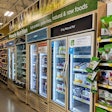
With humanization of pets the norm now, human food trends continue to significantly impact pet food product development and marketing strategy. That can happen with consumer concerns, too. For example, many consumers seek to avoid heavily processed foods and are extending that desire to their pets’ diets – though the term “processing” can be confusing and is often mistakenly perceived as inherently bad or unhealthy (https://bit.ly/2IFvfye).
“Processed foods can be, and often are, misunderstood,” said Bryan Hitchcock senior director of food chain and executive director of the Global Food Traceability Center of the Institute of Food Technologists, on the Brain Food blog. “There are many different types of processed food and some can be unhealthy, especially when made with high amounts of sugar, salt or fats. But many are healthy and offer a lot of nutritional value as well as greater accessibility to many people.”
Hitchcock was addressing a classification system for “ultra-processed” foods; and while pet food doesn’t have the same types of classifications, many of the same issues apply. Pet food nutrition, processing and safety are very complex and sophisticated, meaning they’re not easily communicated or understood by many consumers (or even human food companies that acquire pet food companies).
Yet, in terms of further pet food market growth, there may be a silver lining to concerns about traditional processing of pet foods (extruded or canned, for the most part). While dry extruded pet food still dominates the global market, followed somewhat distantly by wet retort food, newer formats are growing fast, albeit from a small base. For example, in U.S. pet specialty (brick-and-mortar pet stores), Nielsen reported the following for 2018:
- Frozen pet foods accounted for 3.7% of new product launches, US$136 million in sales, 15% growth and a 1.4% market share;
- Freeze-dried full meals had 2.7% of new product launches, 20% sales growth, to US$112 million, and a 1.4% share;
- Dehydrated/air-dried full meals saw an increase in new product launches from 1.8% to 3.3%, plus US$56 million in sales, representing 23.7% growth and a 0.7% share.
Many pet owners care as much about how their pets’ food is made as what’s in it, and that promises to only increase. Will it eventually lead to a shake-up in sales and market share of pet food categories?



















